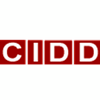By Katrina Voss, for Penn State Science News
While public health officials around the world are on alert about the pandemic potential of new disease threats, a team that includes Penn State University biologist Marcel Salathé is developing innovative new systems and techniques to track the spread of infectious diseases, with the help of news websites, blogs, and social media. An article by Salathé and colleagues from the Harvard Medical School, published in the early online issue of the New England Journal of Medicine on 3 July 2013, describes the advantages and challenges of "digital epidemiology" -- a new field of increasing importance for tracking infectious disease outbreaks and epidemics by leveraging the widespread use of the Internet and mobile phones.
"In the past year, the world has seen an emerging outbreak of two viruses with considerable pandemic potential: Middle East Respiratory Syndrome Coronavirus and Avian Influenza A H7N9," Salathé said. He explained that the former is similar to the virus responsible for the SARS outbreak in 2002 and 2003 and has, since 2012, infected 64 people, 38 of them fatally. Influenza A H7N9 is a virus that normally circulates in birds but has, since the beginning of 2013, infected 137 people, 32 of them fatally.
"Digital epidemiology played a crucial role in the surveillance of both Middle East Respiratory Syndrome Coronavirus and Avian Influenza A H7N9 by enhancing transparency and helping public health officials to understand outbreaks more fully. It is clear that the importance of digital epidemiology will only increase in the future as more people get mobile access to broadband around the globe," said Salathé, who uses data from social media in his research to study how sentiments about vaccination spread in populations. "With 6.8 billion mobile-phones and 2.9 billion people online, it's getting increasingly hard for any micro-organism to spread undetected for long."
Salathé also said he predicts that digital epidemiology will not be limited to just infectious diseases for long. "Mining these novel, big-data streams is of enormous interest to practically anyone interested in health and disease," he said. "For example, researchers and public health officials could use data-mining techniques to detect adverse drug reactions, assess mental disorders, or track health behaviors much faster than they do with traditional methods."
Salathé added that he is honored to have the opportunity to reach such a wide audience through the New England Journal of Medicine. "We're hoping to put digital epidemiology on the agenda of every public health agency to complement their traditional efforts to track diseases and assess and mitigate the spread of infectious diseases," he said.
Publication Details
Salathé M, Freifeld CC, Mekaru SR, Tomasulo AF, & Brownstein JS
Influenza A (H7N9) and the importance of digital epidemiology
Journal: New England Journal of Medicine
DOI Reference



